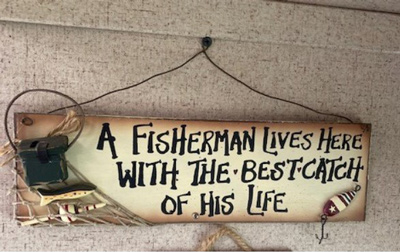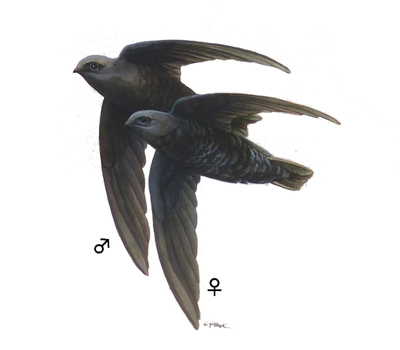|
July
2021
Contents
Monthly Meeting
Upcoming Field Trips
President's Message
Bird of the Month
Special Articles
Field Trip Reports
JULY MEETING:
Black Swift field Trip
July 15, 2021 6 pm
South Fork/ Bridal Veil Falls.
Meet at the Vivian Park parking lot at 6 pm. We will bird South Fork first. Then
end at Bridal Veil Falls overlook at around 7:30 pm to look for the Black
Swifts.
(See the Bird of the Month article below
for information about the Black Swift)
FIELD TRIPS:
Black Swift field Trip
July
15, 2021 6 pm
South Fork/ Bridal Veil Falls.
Meet at the Vivian Park parking lot at 6 pm. We will bird South Fork first.
Then end at Bridal Veil Falls overlook at around 7:30 pm to look for the
Black Swifts. |
President's Message -
July 2021
by Machelle Johnson
In June my husband and I celebrate our wedding anniversary. This year we marked
39 years of marriage. We typically celebrate by going camping, so this year we
went to Strawberry Reservoir and got a nice spot at the edge of the lake. The
campground wasn't too crowded but there were a lot of boats out on the water. My
husband likes to fish and I like to bird, so our hobbies are quite compatible. I
saw my FOY Brewer's Sparrow, Vesper Sparrow, and Bank Swallow,
and watched Cliff Swallows making nests on the picnic table hutches. I
saw 27 species from my camp chair.
It's always at least breezy at Strawberry, but the first day was downright windy
and gusty! Mike had gone over to the Marina to talk to his friend, John
Phillips, so I went inside the trailer to get out of the wind. I was looking
around, deciding what to do while I was inside, and this sign on the wall caught
my eye: "A Fisherman lives here with the best catch of his life"
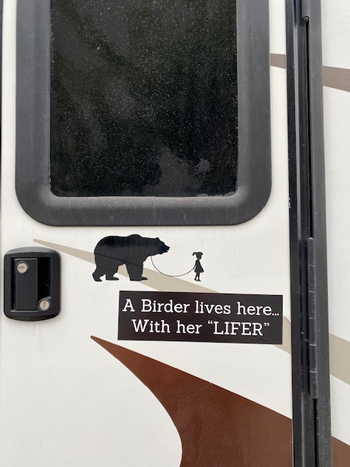
It's a nice sentiment, I've heard others before too: A Bear lives here
with his Honey; A Hunter lives here with his Dear; A Cowboy (or Biker)
lives here with the ride of his life. Maybe you've heard of others.
I wondered what would apply to me personally, since I don't fish or hunt, or
ride motorcycles, and I came up with: "A Birder lives here with her
Lifer", pretty good huh! Coming soon to a wall hanging or throw pillow or
sticker near you! (...Or the one on the right, printed up for
Machelle by her husband
→).
Have
a great summer, and I hope to see you out there!
Machelle
,__,
(0,0)
/)_)
""
|
|
BIRD OF THE MONTH:
|
|
|
|
|
Black Swift
(Cypseloides niger)
-
By Carel Brest van Kempen
-
Here's a little illustration of one of our most
interesting and least-known native birds that should be back in the state by
now. With an 18" wingspan, the Black Swift is North America's biggest swift
species. It's also the most poorly understood one. Black Swifts were never
common, but over the past half century, their overall population seems to
have decreased by about 90 percent. They look very much like larger versions
of the much more common White-throated Swifts, only their plumage is
completely blackish. Some individuals have whitish tips to the feathers of
their undersides, and for a long time this was presumed to be a
characteristic of juvenile birds. A recent study found that it's actually a
mark of female birds of all ages, although it's not a dependable way to
distinguish the sexes, as some females lack the white tips and some males
have them. The sexes can be reliably told apart by the shapes of their
tails; those of males are distinctly forked, while the females' tails are
not. The only place I know of in Utah where Black Swifts reside is Mount
Timpanogos. When you hike that mountain in the summer, you can usually spot
one flying about high in the sky, if you keep your eyes open. Like other
swifts, they spend all day aloft, only landing to nest. A crevice in a rock
face, usually behind a waterfall, is selected as a nest site. A single egg
is laid, and both parents care for the young bird. They bear a throat pouch
that they can fill up with insects caught on the wing. Once the young bird
is flying well, in about mid-August, the birds disappear. For a long time,
nobody knew where they migrated to, until a couple of years ago, when
researchers in Colorado fitted four Black Swifts with geolocators and
managed to retrieve three of them the following year. All three birds had
followed roughly the same route to winter in western Brazil. What sort of
habitat they exploit or how they live is still unknown, since Black Swifts
still have not been documented in Brazil. We only know that they make it
back up to our region around the middle of May.
|
|
|
Field Trip Reports
|
|
|
|
17 June 2020, Payson
Utah
Hollow Park Field Trip & June
Meeting
By Suzi Holt
|
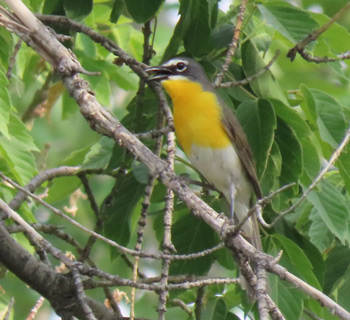
Yellow-breasted Chat
|
We had a good field
trip tonight at the Hollow Park! Lots of Yellow-breasted Chats, a Cooper's
Hawk, Black-chinned Hummingbirds, Yellow Warbler, American Robin,
American Kestrel, Swainson's Hawk,
Warbling Vireo, Blue-gray Gnatcatchers, Black-headed Grosbeak, Barn and Cliff
Swallow and a few others. It was hot 91° F at 6 pm but we totaled 20
species!
Thanks for coming
|
|
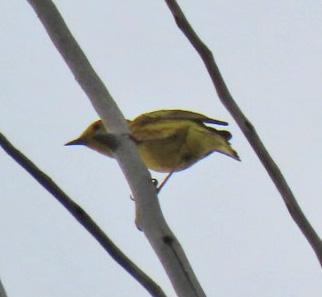
Yellow Warbler |
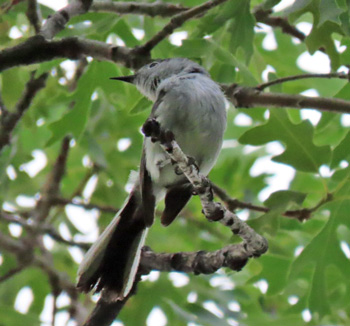
Blue-gray Gnatcatcher |
|
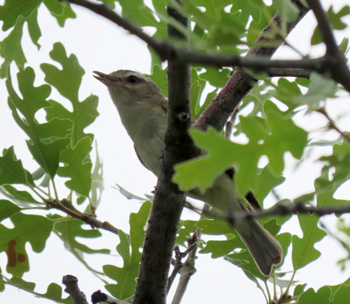
Warbling Vireo |
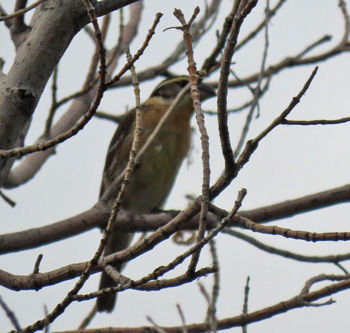
Black-headed Grosbeak |
|
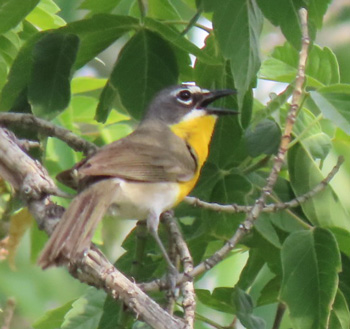
Singing Yellow-breasted Chat |
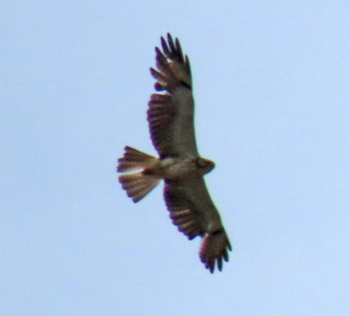
Swainson's Hawk |
| |
|
|
|
|
|
|
|
|
|
|
|
If you have had any interesting
field trips on your own this month,
feel free to write a report for the newsletter!
(Send it to:
ucbirders@utahbirds.org)
|
|
|

